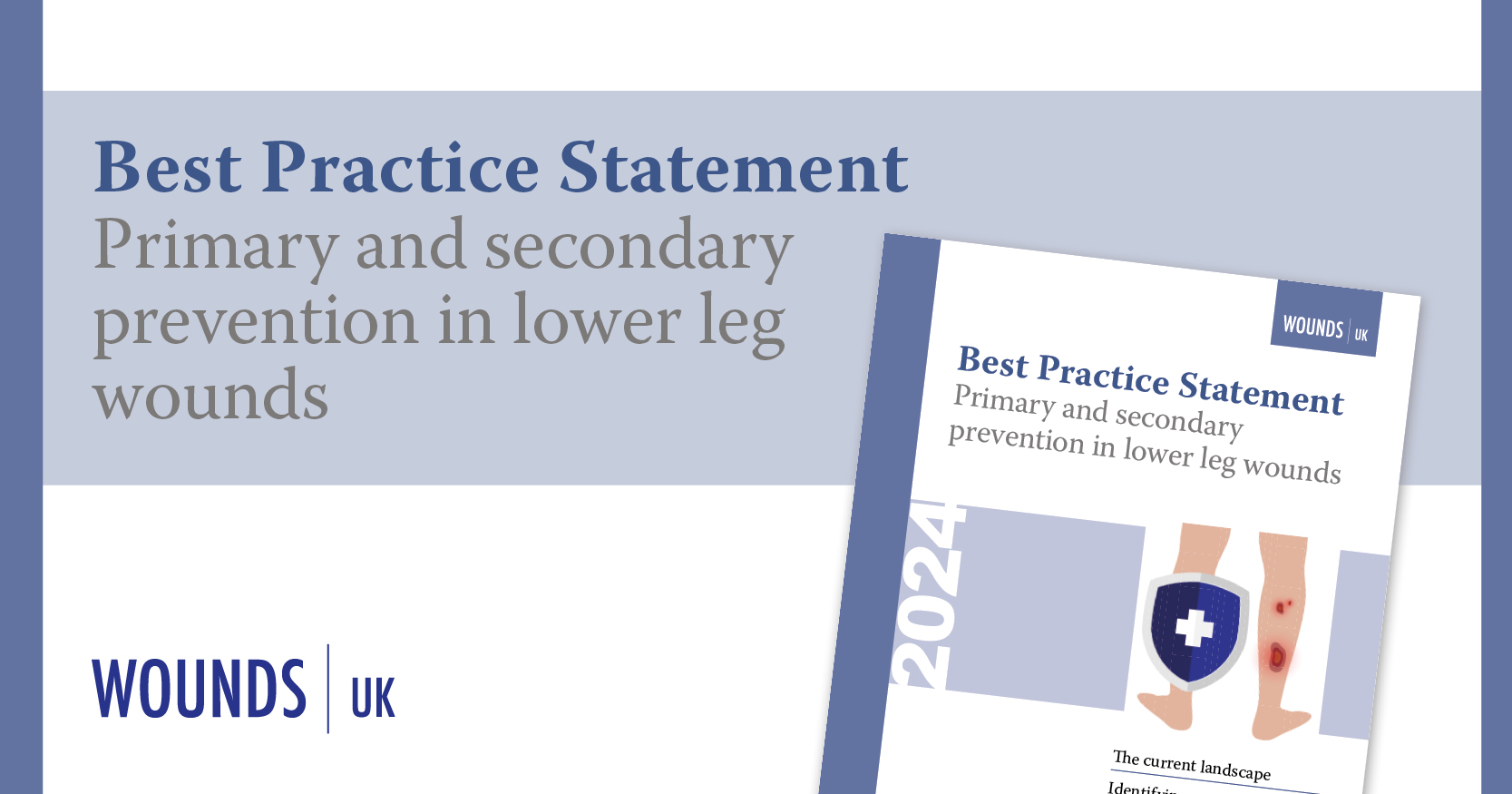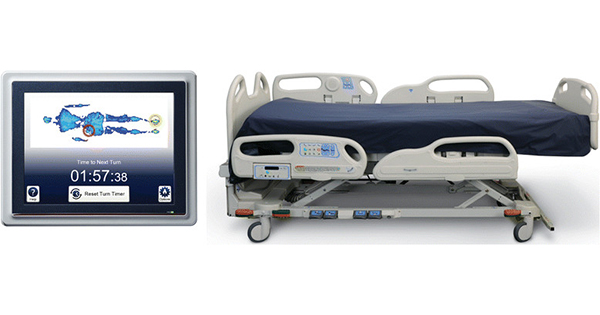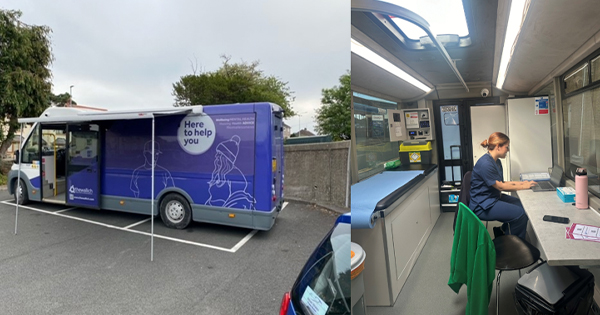ReferencesAbbade LP, Lastoria S, de Almeida Rollo H, Stolf HO (2005) A sociodemographic, clinical study of patients with venous ulcer. Int J Dermatol 44: 989–92
Ashby RL, Gabe R, Ali S, Adderley U (2014) Clinical and cost-effectiveness of compression hosiery versus compression bandages in treatment of venous leg ulcers (Venous Leg Ulcer Study IV, VenUS IV): A randomised controlled trial. Lancet 383(9920): 871–9
Atkin L, Byrom R (2022) The links between heart failure and leg oedema: the importance of compression therapy. Wounds UK 18(3): 22–6
Beeckman D, Campbell KE, Le Blanc K et al (2020) Best practice recommendations for holistic strategies to promote and maintain skin integrity. Wounds International
Bianchi J, Vowden K, Whitaker J (2012) Chronic oedema Made Easy. Wounds UK
Bradford S, Rossiter S (2020) Working together to improve outcomes for patients with chronic oedema/wet legs. Wounds UK 16(1): 52–7
British Lymphology Society (2021) British Lymphology Society position paper for the management of people with lymphoedema in the presence of deep vein thrombosis (DVT). Available online at: https://tinyurl.com/2z3hf2jp (accessed 27.11.2023)
Callaghan R, Cowdell F, Danby S et al (2018) Best Practice Statement: Maintaining skin integrity. Wounds UK
Cooper-Stanton (2018) Chronic oedema and the older person. Br J Community Nurs 23(Sup10): S14-20
Creedon R (2013) The psychological effects of living with chronic oedema. Br J Community Nurs 16(4): 14–9
Dhoonmoon L, Fletcher J, Atkin L et al (2021) Best practice statement. Addressing skin tone bias in wound care: Assessing signs and symptoms in people with dark skin tones. Wounds UK
Finlayson K, Wu ML, Edwards HE (2015) Identifying risk factors and protective factors for venous leg ulcer recurrence using a theoretical approach: A longitudinal study. Int J Nurs Stud 6: 1042–5
Fino P, Di Taranto G, Pierro A et al (2019) Depression risk among patients with chronic wounds. Eur Rev Med Pharmacol Sci 23(10):4310-2
Fletcher J, Atkin A, Dowsett C et al (2016) Best practice statement: Holistic management of venous leg ulceration.Wounds UK
Fletcher J, Buxey K, Conway K et al (2019) Best Practice Statement: Ankle brachial pressure index (ABPI) in practice. Wounds UK
Fletcher J (2022) Why do we prevent pressure ulcers and treat leg ulcers? Wounds UK 18(1): 6–9
Fletcher J, Atkin L, Dhoonmoon L et al (2022) Best Practice Statement: Holistic management of venous leg ulceration (second edition). Wounds UK
Guest JF, Fuller GW, Vowden P (2018) Venous leg ulcer management in clinical practice in the UK: costs and outcomes. Int Wound J 15(1): 29–37
Guest JF, Fuller GW, Vowden P (2020) Cohort study evaluating the burden of wounds to the UK’s National Health Service in 2017/2018: update from 2012/2013. BMJ Open 10(12): e045253
Harding K (2016) Challenging passivity in venous leg ulcer care – the ABC model of management. Int Wound J 13(6): 1378–84
Herraiz-Ahijado B, Folguera-Álvarez C, Verdú-Soriano J et al (2023) Active legs: Impact of physical activity as an adjuvant treatment in the healing of venous ulcers in primary care: a RCT protocol study. BMC Nursing 22: 65
Hughes M, Balduyck B (2022) Challenges of venous leg ulcer management Made Easy. Wounds International
Ismail L, Normahani P, Standfield NJ, Jaffer U (2016) A systematic review and meta-analysis of the risk for development of varicose veins in women with a history of pregnancy. J Vasc Surg Venous Lymphat Disord 4(4): 518–24
Keast D, Despatis M, Allen JO, Brassard A (2015) Chronic oedema/lymphoedema: Under-recognised and under-treated. Int Wound J 12(3): 328–33
Le Blanc K, Campbell K, Beeckman D et al (2018) Best practice recommendations for the prevention and management of skin tears in aged skin. Wounds International
Legs Matter (2023) Oedema and lymphoedema. Available online at: https://legsmatter.org/information-and-support/health-concerns/oedema-and-lymphoedema/ (accessed 27.11.2023)
Malnutrition Advisory Group (2018) The ‘MUST’ Report. Nutritional Screening for Adults: A Multidisciplinary Responsibility. Available at: www.bapen.org.uk (accessed 13.12.2023)
McDaniel HB, Marston WA, Farber MA et al (2002) Recurrence of chronic venous ulcers on the basis of clinical, etiologic, anatomic, and pathophysiologic criteria and air plethysmography. J Vasc Surg 4: 723–8
Mishra MK, Saunders CH, Rodriguez HP et al (2018) How do healthcare professionals working in accountable care organisations understand patient activation and engagement? Qualitative interviews across two time points. BMJ Open 8(10): e023068
Moore Z, Bell T, Carville K et al (2016) Optimising patient involvement in wound management. Wounds International
Moore Z, O’Brien G, Atkin L et al (2022) Patients presenting with ‘red legs’: Differential diagnosis and the role of compression. Wounds International
National Institute for Health and Clinical Excellence (2021) Leg ulcer – venous. NICE, London. Available at: https://cks.nice.org.uk/topics/leg-ulcer-venous/ (accessed 17.11.2023)
National Institute for Health and Clinical Excellence (2022) Scenario: Compression stockings. NICE, London. Available at: https://tinyurl.com/yc4wcw2j (accessed 14.12.2023)
National Institute for Health and Clinical Excellence (2023) Deep vein thrombosis. NICE, London. Available at: https://cks.nice.org.uk/topics/deep-vein-thrombosis/ (accessed 14.12.2023)
National Wound Care Strategy Programme (2023) Pressure ulcer recommendations and clinical pathway. Available at: https://tinyurl.com/nmfyxvbe (accessed 17.11.2023)
Newton H (2015) Impact of compression therapy on chronic venous disease. Wound Essentials 10(2): 14–9
NHS (2022) Causes of venous leg ulcers. Available at: https://www.nhs.uk/conditions/leg-ulcer/causes (accessed 09.05.2024)
O’Dea K (1995) The prevalence of pressure sores in four European countries. J Wound Care 4 (4):192–5
Ousey K, Atkin L, Conway B et al (2021) Wound care and dressing selection for pharmacy teams. Wounds UK
Ousey K, Atkin L, Chouliara Z et al (2023) Best practice statement: Personalised self-care for people with leg ulcers. A toolkit for change. Wounds UK
Perry C, Atkinson RA, Griffiths J et al (2022) What promotes or prevents greater use of appropriate compression in people with venous leg ulcers? A qualitative interview study with nurses in the north of England using the Theoretical Domains Framework. BMJ Open 12: e061834
Perry C, Atkinson RA, Griffiths J et al (2023) Barriers and facilitators to use of compression therapy by people with venous leg ulcers: A qualitative exploration. JAN 79(7): 2568-84
Platsidaki E, Kouris A, Christodoulou C (2017) Psychosocial aspects in patients with chronic leg ulcers. Wounds 29(10):306–310
Serra R, Andreucci M, de Franciscis S et al (2017) Functional chronic venous disease: A systematic review. Phlebology 32(9): 588–92
Smith IL, Nixon J, Wilson L et al (2016) Pressure ulcer and wound reporting in NHS hospitals in England part 1: Audit of monitoring systems. J Tissue Viability 25(1): 3–15
Stang D and Leese GP (2017) The Scottish Diabetes Foot Action Group 2016 update of the Diabetic Foot Risk Stratification and Triage System. Wounds International 8(1): 25–8
Stephen-Haynes J, Atkin L, Elstone A et al (2015) Best Practice Statement: Compression hosiery (second edition). Wounds UK
Stephenson J, Fletcher J, Parfitt G, Ousey K (2021) National audit of pressure ulcer prevalence in England: a cross sectional study. Wounds UK 17(4):45–55
Wilson M (2016) Top tips for prevention of venous leg ulcer reoccurrence. Wound Essentials 11(1): 18-21
World Union of Wound Healing Societies (2020a) Strategies to reduce practice variation in wound assessment and management. Wounds International
World Union of Wound Healing Societies (2020b) Optimising wound care through patient engagement. Wounds International
Wounds UK (2015) All-Wales guidance for the prevention and management of skin tears. Wounds UK
Wounds UK (2021) Therapeutic Compression Explained. Wounds UK
Wounds UK (2023a) Quick Guide: Personalising best practice compression option: ReadyWrap®, The solution for simple compression. Wounds UK
Wounds UK (2023b) Best Practice Statement: Personalised self-care for people with venous leg ulcers: a toolkit for change. Wounds UK
Young T (2017) Back to basics: Understanding venous leg ulceration. Wounds UK 13(2): 71–6







